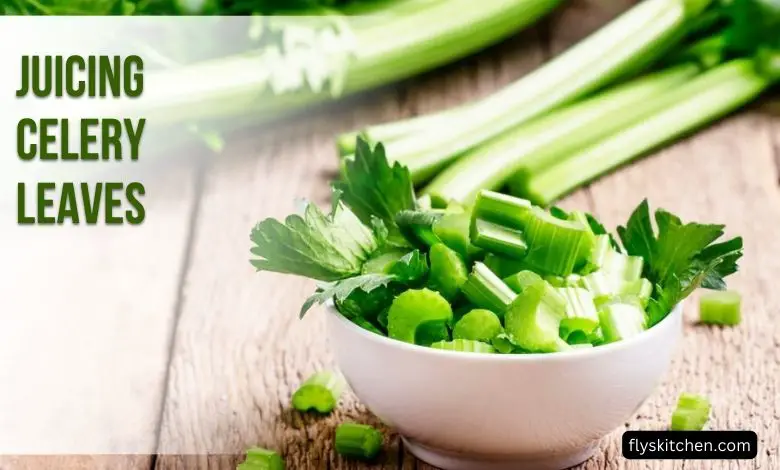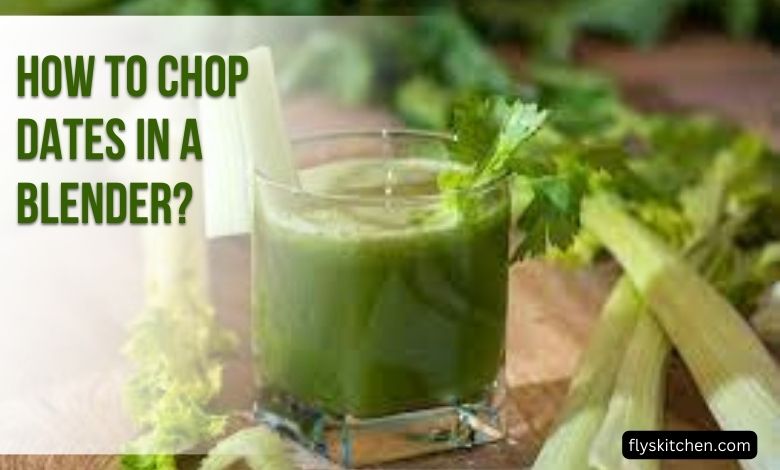Celery is a familiar vegetable, with its long green stalks often found in soups, stir-fries, and served raw with dips. Yet many people simply chop off and discard the leafy green tops attached to the stalks. This is a missed opportunity, as celery leaves are completely edible and contain an impressive array of vitamins, minerals, and plant compounds.
Celery leaves have a much more intense, herbal flavor compared to the relatively mild-tasting stalks. Their taste and aroma are similar to parsley. The leaves are packed with beneficial nutrients like vitamin K, vitamin A, vitamin C, folate, calcium, potassium, and the antioxidant lutein.
Given the outstanding nutritional profile of celery leaves, juicing them is an easy way to obtain higher concentrations of these nutrients. However, can you actually juice celery leaves? Are there any notable benefits or potential risks to be aware of? This comprehensive article explores the ins and outs of celery leaves and juicing. It covers whether they can be juiced, tips for preparing celery leaf juice, the possible health benefits supported by research, and any precautions to keep in mind. After reading, you’ll understand how to best use celery leaves and juice them as part of a healthy, nutrient-rich diet.
Contents
- 1 An Introduction to Celery Leaves
- 2 Can You Juice Celery Leaves?
- 3 Juicing Celery Leaves Helps Maximize Nutrients
- 4 Tips for Juicing Celery Leaves
- 5 Potential Benefits of Juicing Celery Leaves
- 6 Potential Risks of Juicing Celery Leaves
- 7 FAQ About Juicing Celery Leaves
- 8 Get Your Fill of Nutrients With Celery Leaf Juice
An Introduction to Celery Leaves
Celery is a common vegetable that most people are familiar with. The long, green stalks are commonly found in soups, and stir-fries, and eaten raw with dips. However, many people tend to chop off and discard the leafy green tops. This is a mistake, as the leaves, which are attached to the stalks, are edible and nutritious.
Celery leaves offer a more intense flavor than the stalks. They have a stronger taste and aroma similar to parsley. The leaves are rich sources of vitamins and minerals. Some of the top nutrients in celery leaves include:
- Vitamin K: Essential for blood clotting and bone health.
- Vitamin A: Important for eye health and immune function.
- Vitamin C: Aids immunity and acts as an antioxidant.
- Folate: Plays a role in DNA synthesis and red blood cell production.
- Calcium: Vital for bone health, muscle contractions, and nerve signaling.
- Potassium: Helps lower blood pressure and supports muscle and nerve activity.
- Lutein: An antioxidant that helps protect eye health.
Given their stellar nutritional profile, juicing celery leaves can be a nutritious way to enjoy their benefits.
Can You Juice Celery Leaves?
Yes, celery leaves can be juiced. Celery leaves contain high amounts of water just like the stalks, making them ideal for juicing. The leaves blend up easily into juice without needing to be pre-chopped.
When juicing celery leaves, it is best to juice them in combination with other fruits and vegetables. On their own, celery leaves have an extremely potent, almost bitter taste that is too strong for most people to enjoy. By balancing out the flavor with sweeter and more mellow produce, you can make a nutritious juice with the added nutrition of celery leaves that still taste pleasant.
Some ingredients that complement celery leaves when juicing include:
- Sweet fruits like apples, pears, oranges, pineapple
- Melons like honeydew or cantaloupe
- Cucumber, lettuce, spinach, kale, parsley
- Carrots, beets
- Celery stalks
- Fresh herbs like mint, basil
Mix and match a few ingredients from this list along with a handful of celery leaves to create a tasty juice full of vitamins, minerals, and antioxidants. Adjust the ratios based on your own taste preferences. Start with just a few leaves mixed into other produce until you get used to the stronger flavor.
Juicing Celery Leaves Helps Maximize Nutrients
There are a few key reasons why juicing celery leaves is beneficial:
Increases Intake of Nutrients
By juicing the leaves instead of eating them whole, you can ingest a higher concentration of nutrients. This allows you to easily consume much more than you could chew. Blending multiple celery leaves into juice makes their vitamins and minerals more bioavailable and better absorbed by the body.
Provides Compounds Not Found in Stalks
The leaves contain certain beneficial plant compounds like apigenin and luteolin that are not present in the stalks. Juicing the leaves gives you access to these unique phytonutrients.
Easy to Digest
The leaves’ fiber is removed during juicing, making their nutrients much easier to break down and absorb. This is especially helpful for those with digestive issues.
Versatility
Celery juice can be incorporated into all sorts of recipes beyond just-drinks. Use it in soups, sauces, dressings, and more to boost nutrition.
So while eating the leaves whole is great, juicing them enables you to better utilize the distinct nutrition they offer.
Tips for Juicing Celery Leaves

Follow these tips to get the most out of juicing celery leaves:
- Wash leaves thoroughly to remove dirt and debris before juicing.
- Chop leaves into smaller pieces to feed through the juicer chute. If leaves are whole, they may clog up the machine.
- Juice leaves with watery, pulpy produce like cucumber and lemon. This helps push leaves through.
- Combine leaves with sweet fruits and mild veggies to balance out the strong flavor. Apples and carrots work well.
- Start with a ratio of 1 part leaves to 3 parts other produce until accustomed to the taste.
- Drink juice right away to prevent oxidation and loss of nutrients.
- Store any extra juice in an airtight container in the refrigerator up to 24 hours.
Potential Benefits of Juicing Celery Leaves
Research on juicing celery leaves specifically is limited. However, studies do suggest beneficial effects from juicing and consuming celery as a whole. Potential benefits of juicing celery leaves include:
- Lowering inflammation: Celery contains polyacetylenes that demonstrate anti-inflammatory properties in studies. This may help conditions like joint pain, IBD, and cardiovascular disease.
- Supporting liver health: Celery has antioxidants that protect the liver and compounds that help the liver detoxify. This could boost liver function in those with liver disease.
- Regulating cholesterol: The lutein in celery helps reduce LDL “bad” cholesterol levels to decrease heart disease risk.
- Lowering blood pressure: Phthalides, antioxidants unique to celery, may help relax artery walls and reduce hypertension.
- Fighting infections: Celery’s antioxidants strengthen the immune system against bacteria, viruses, and fungi.
- Protecting brain function: Lutein, beta-carotene, and vitamin K in celery leaves help cognition, memory, and brain health.
- Boosting digestion: The high water content in celery juice aids hydration, digestion, and gut health.
While more research is still needed, juicing celery leaves appears to have great potential benefits due to the vegetable’s diverse range of nutrients and compounds.
Potential Risks of Juicing Celery Leaves
Celery leaves and juice are very healthy and safe for most people, but some precautions apply:
- Allergies: Celery allergies, while uncommon, can cause reactions. Discontinue use if any symptoms occur.
- Pesticides: Celery is on the EWG’s “Dirty Dozen” list for high pesticide levels. Opt for organic.
- Blood thinning: Celery contains coumarin, which acts as a natural blood thinner. Avoid large amounts of celery if taking blood thinners.
- Diarrhea: Large quantities of celery juice may have a laxative effect. Start with low servings.
- Salt sensitivity: Those with high blood pressure or on a low-sodium diet should monitor intake, as celery contains some natural sodium.
Consult your doctor before adding large amounts of celery juice to your diet if you have any medical conditions or take medications. Otherwise, juicing celery leaves appears very safe if consumed in moderation as part of a healthy diet.
FAQ About Juicing Celery Leaves
Here are some common questions about juicing celery leaves:
Are celery leaves safe to eat?
Yes. Celery leaves are entirely edible and safe for most people. They contain beneficial nutrients without any toxic compounds. Introduce them slowly to check for allergies.
Do I need a special juicer for celery leaves?
No. Any juicer that can handle leafy greens like spinach or kale can also juice celery leaves. Masticating juicers tend to work best, but centrifugal juicers can also juice leaves when chopped.
What’s the best time of day to drink celery juice?
Most nutritionists recommend drinking green vegetable juices like celery early in the day either 30 minutes before or after breakfast. This provides a burst of nutrients to energize you.
Is it better to juice celery leaves or blend them?
Juicing separates the liquid from the insoluble fiber, concentrating the nutrients and making them easier to digest. Blending keeps the fiber intact for gut health but may cause digestive issues short term.
Can I freeze celery leaf juice?
Yes. Freeze small portions in ice cube trays or muffin tins for individual use. Thaw overnight in the fridge before drinking. Freezing helps the juice retain nutrients longer.
Get Your Fill of Nutrients With Celery Leaf Juice
In conclusion, celery leaves are highly nutritious but often overlooked parts of this vegetable. While they have an intensely herbaceous flavor, the leaves can be mixed into green juices for added health benefits. Juicing celery leaves allows you to easily consume higher quantities of antioxidants, vitamins, and minerals. Combining the leaves with milder, sweeter produce can help balance out their strong taste in juice. Drink celery leaf juice in moderation alongside a balanced diet to improve digestion, lower inflammation, boost immunity, and more. Be sure to buy organic and introduce celery juice slowly to gauge your tolerance.

